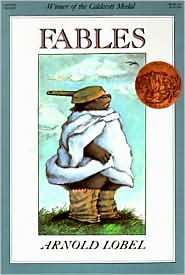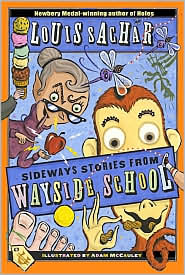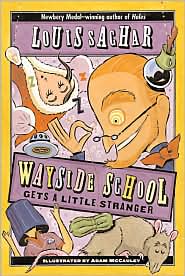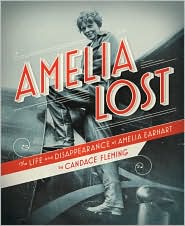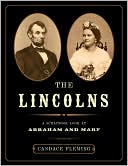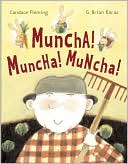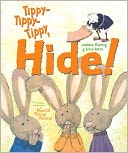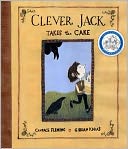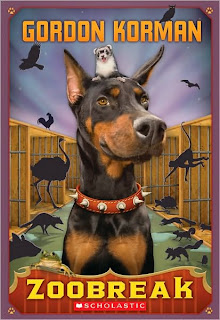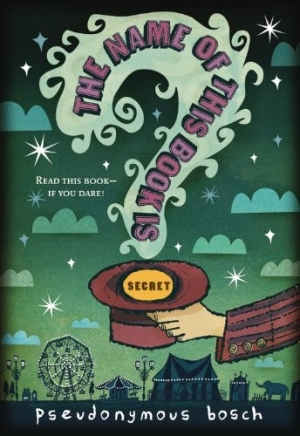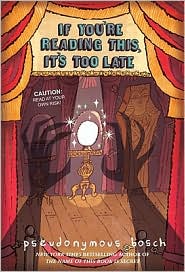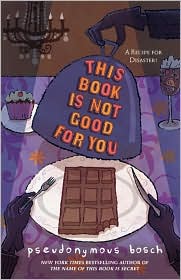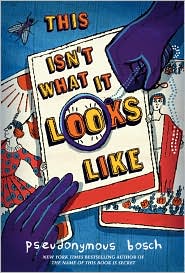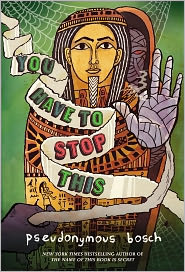
 I have to begin this review by saying that I am completely amazed that Ellen Klages' book The Green Glass Sea has only one award medal on its cover rather than the raft of awards that it deserves. It did win the Scott O'Dell Award for Historical Fiction in 2007, which is a prestigious honor, but this seems to be one of the many great books mysteriously overlooked by the Newbery panel of judges in any given year. Besides the stunning setting, Los Alamos National Laboratory during the Manhattan Project, Klages' book is also unique for its representation of intelligent, scientifically minded girls and women. And, finally, The Green Glass Sea is the moving story of two girls who are outsiders on the way to finding themselves and each other. I think I have said here before that I have a hazy grasp of history, so I began reading The Green Glass Sea with only a basic knowledge of the Manhattan Project and the events that occurred in Los Alamos, New Mexico during WWII. I knew how the book might end, but I had no idea how the story would unfold on the path to the successful detonation of the atomic bomb, which is what the adults in The Green Glass Sea are intensely involved in over the course of the story. I am sure that this is the way most young readers encounter this book, unless a parent is reading along with them and providing historical background information. I think this is wonderful, because the reader travels through the plot with the same general sense of knowing that there is a big, big secret and not knowing what it is that the child characters in the book have. However, I think that a discussion of or research into the atomic bomb and the end of WWII is crucial for young readers when reading this book. Keep a pad of paper and pencil next to you as you read - there are so many things you will want to know more about as the story unfolds.
I have to begin this review by saying that I am completely amazed that Ellen Klages' book The Green Glass Sea has only one award medal on its cover rather than the raft of awards that it deserves. It did win the Scott O'Dell Award for Historical Fiction in 2007, which is a prestigious honor, but this seems to be one of the many great books mysteriously overlooked by the Newbery panel of judges in any given year. Besides the stunning setting, Los Alamos National Laboratory during the Manhattan Project, Klages' book is also unique for its representation of intelligent, scientifically minded girls and women. And, finally, The Green Glass Sea is the moving story of two girls who are outsiders on the way to finding themselves and each other. I think I have said here before that I have a hazy grasp of history, so I began reading The Green Glass Sea with only a basic knowledge of the Manhattan Project and the events that occurred in Los Alamos, New Mexico during WWII. I knew how the book might end, but I had no idea how the story would unfold on the path to the successful detonation of the atomic bomb, which is what the adults in The Green Glass Sea are intensely involved in over the course of the story. I am sure that this is the way most young readers encounter this book, unless a parent is reading along with them and providing historical background information. I think this is wonderful, because the reader travels through the plot with the same general sense of knowing that there is a big, big secret and not knowing what it is that the child characters in the book have. However, I think that a discussion of or research into the atomic bomb and the end of WWII is crucial for young readers when reading this book. Keep a pad of paper and pencil next to you as you read - there are so many things you will want to know more about as the story unfolds.
When first meet Dewey Kerrigan in November of 1943 she is waiting for her father to come and get her. A month shy of eleven, she wears steel rimmed glasses and one brown shoe that laces up the side and she has been living with her Nana, who recently went into a nursing home. Dewey's father is going to take her to his new job in New Mexico where she will live with him again for the first time in almost four years. However, instead of her father an army escort picks her up and puts her on the train by herself. Disappointed, Dewey doesn't have too much to say about this and accepts her situation stoically, as she has her whole life. The train ride goes reasonably well and she even has a chance to pull out her copy of The Boy Mechanic and get some work done on the radio she has been building. Thinking she is alone in the observation car early in the morning, she is surprised to get some help from a man named Dick Feynman, who is returning to Los Alamos. Nobel prize winner Richard P Feynman is not the only famous scientist to make an appearance in The Green Glass Sea. J Robert Oppenheimer, who is referred to as "Oppie" in the book and Enrico Fermi also make appearances.
The extreme secrecy of the Manhattan Project and the existence of the laboratory at Los Alamos is not lost on Dewey or the reader. Mail is censored, people rarely leave the compound and all mail comes to one single PO Box. No one is referred to by their academic titles, in fact, not even something as simple as being called a chemist or physicist is allowed at the lab. The kids adapt to this by calling their parents "fizzlers" and "stinkers." Once ensconced in a small apartment with her father, Dewey's life gains a bit of normality as she attends school and tries to make friends, although there are many nights that her father doesn't come home for dinner and she cooks for herself. Despite the fact all of the children at Los Alamos (at least those who are not the children of the ranking military there to guard the site) are the offspring of brilliant scientists, there are still mean girls who make Dewey's life miserable and call her Screwy Dewey. However, while making visits to the dump at Los Alamos to find pieces and parts for her inventions she meets two brothers who befriend her, making her life a bit less lonely.
Suze Gordon is the other main character in The Green Glass Sea and at first she seems almost as unlikable as the girls who tease Dewey. She joins in the ostracizing of Dewey, but it turns out that she is only slightly less an outcast. Suze tried to be part of the Girl Scouts Troupe run by the popular girls in her grade, but she was not happy to have more rules, more green uniforms and more requirements in her life than those already imposed upon her by life at Los Alamos. Both her parents are scientists from UC Berkley and she often finds herself home alone like Dewey. Unimaginative and unexceptional at school, Suze spends her free time drinking Cokes and reading comic books. Regardless, Suze is unwilling to share her room with Dewey when Jimmy Kerrigan is called to Washington DC for work. Mrs Gordon and Jimmy are in the same singing group and through their friendship she comes to know Dewey and takes a liking to her and is happy to have her stay for a few weeks in her home.
The blossoming of the friendship between Dewey and Suze is a bit like waiting for a seed to grow in the desert. In the winter. But it does grow and in a very real, believable, moving way. With fits and starts, the girls find a common language or two. While helping Dewey sort through her boxes and jars of pieces and parts for a specific bolt, Suze begins sorting the objects and then arranging them. Dewey takes note of the artistic way that she has done this and Suze realizes that she has made a collage. From then on, she uses discarded magazines and the art supplies her Grandfather back in Berkeley sends her from his stationary story to make her creations. In turn, Suze shares her comic books with Dewey, who has never read one. The girls also take tentative steps toward each other when they learn that they have names that derive from scientific figures or concepts. Eventually, they begin to work on a joint creation that involves Suze's collages and Dewey's moving gizmos to make up the Shazam Theater, a name with special meaning for the girls. It goes unfinished when the successful detonation of the bomb means the end of the Manhattan Project and a return to civilian life for most of the scientists at the lab.
While the compelling story of Dewey and Suze plays out, in the background of their lives are the serious events that the adults are working toward. Mr Kerrigan and Mrs Gordon discuss their work in vague ways with the girls from time to time and, while the kids and adults all refer to it as "the gadget," they all know that the adults are building some kind of bomb. In the summer of 1945 Mr Gordon begins staying at work later and later, eventually leaving the lab to work at another site called Trinity. Finally, on July 16, 1945 the bomb is tested at Alamogordo, New Mexico. Mr Gordon is at the site for the test and, some 220 miles away, most of the scientists and their families assemble on a cliffside at four in the morning to watch the test. The description of the experience, even at such a distance, is chilling. As is the growing realization on the part of Mrs Gordon just what she has been working for and what it means in this world. Her anger and frustration, as well as her husband's acceptance of their role in the creation of the bomb, are described peripherally but part of the story nonetheless. To celebrate Suze's twelfth birthday on August 6, the Gordons and Dewey head back to Trinity and the title of the book (as well as a glimmer of the knowledge of what the title of the book refers to) is revealed.
In addition to the fascinating history that provides the framework for the plot, there are the frequent references to music, math and science that occur throughout The Green Glass Sea. Dewey's father quotes Leibniz when he says that "music is the hidden arithmetic of the soul." Suze takes an interest in learning the Greek alphabet and her mother teachers it to her, the symbols popping up again throughout the book. One part in the book I especially liked was when Suze is reading a Wonder Woman comic and gets to a part in the story where she uncovers the laboratory of a Nazi mad scientist in a long white coat, thick glasses and sporting a pointy beard. Suze pauses to think that every man, at least, at Los Alamos, is a scientist in real life but none of them look like the comic book scientists. It is amazing to see this story, this amazing event in history, through the eyes of a child, but it is also fascinating to read The Green Glass Sea and think about what an incredible environment these children grew up in for a few years of their lives. The offspring of scientific geniuses, they also had the occasional benefit of learning from the adults who surrounded them. Klages continues he amazing story in a second book, White Sands, Red Menace, that finds the girls living in a new town and making new friends while the fallout from Hiroshima affects their lives directly and indirectly. I can't wait to get my hands on this book and anything else Ellen Klages has to share with the world!

A piece of green glass from Almogordo.




